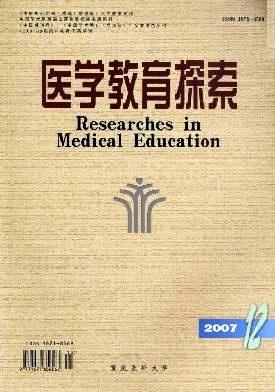Application of simulation teaching on experimental teaching of Basic Nursing
引用次数: 0
Abstract
Objective To investigate the effect of simulation based medical education (SBME) on the experimental teaching of Basic Nursing. Methods A total of 61 four-year undergraduate nursing students in 2015 batch (classic teaching group) and 66 four-year undergraduate nursing students in 2016 batch (simulation teaching group) were selected. Six experiments (aseptic technique, vital sign measurement, nasal feeding, catheterization, intramuscular injection and intravenous infusion) were selected in the SBME group as carrier experiment for scenario simulation teaching. After the end of the teaching, the teaching results were evaluated by questionnaire survey, theoretical knowledge assessment, experimental operation assessment and direct observation of procedural skills. SPSS 19.0 was used to perform the t-test. Results Examination results showed that the good rate and excellent rate in students of 2016 batch were 71.21% and 16.67%, respectively; the good and excellent rate in students of 2015 batch were 55.71% and 1.43%, respectively; theoretical and operational scores in students of 2016 batch were significantly higher than those in students of 2015 batch (P<0.05). According to the questionnaire, 91.0% students in the simulation teaching group believed that the simulation teaching was beneficial to auxiliary learning, 75.8% liked simulation teaching, and 83.3% thought that simulation teaching was able to stimulate their interest in learning; among teachers, 78.94% believed that this method could improve students' ability to analyze and solve problems, 84.21% thought that this method could stimulate students' interest in learning, and 89.48% considered that this method could make students listen carefully. Conclusion Applying the simulation teaching to the experiment teaching of Basic Nursing can effectively improve the teaching quality and teaching effect. Key words: Simulation teaching; Advanced human simulation; Teaching methods; Basic Nursing模拟教学在《基础护理》实验教学中的应用
目的探讨模拟医学教育(SBME)在《基础护理》实验教学中的作用。方法选择2015届护理学本科(经典教学组)61名,2016届护理学本科生(模拟教学组)66名。SBME组选择6个实验(无菌技术、生命体征测量、鼻饲、导管插入术、肌肉注射和静脉输液)作为情景模拟教学的载体实验。教学结束后,采用问卷调查、理论知识评估、实验操作评估和程序技能直接观察等方法对教学效果进行评价。采用SPSS 19.0进行t检验。结果考核结果显示,2016届学生优良率为71.21%,优良率为16.67%;2015届学生优良率为55.71%,优秀率为1.43%;2016届学生的理论和操作成绩显著高于2015届学生(P<0.05)。调查问卷显示,模拟教学组91.0%的学生认为模拟教学有利于辅助学习,75.8%的学生喜欢模拟教学,83.3%的学生认为模拟教学能够激发学生的学习兴趣;在教师中,78.94%的教师认为这种方法可以提高学生分析和解决问题的能力,84.21%的教师认为该方法可以激发学生的学习兴趣,89.48%的教师认为它可以让学生认真听讲。结论将模拟教学应用于《护理学基础》实验教学,可以有效地提高教学质量和教学效果。关键词:模拟教学;高级人体模拟;教学方法;基础护理
本文章由计算机程序翻译,如有差异,请以英文原文为准。
求助全文
约1分钟内获得全文
求助全文

 求助内容:
求助内容: 应助结果提醒方式:
应助结果提醒方式:


